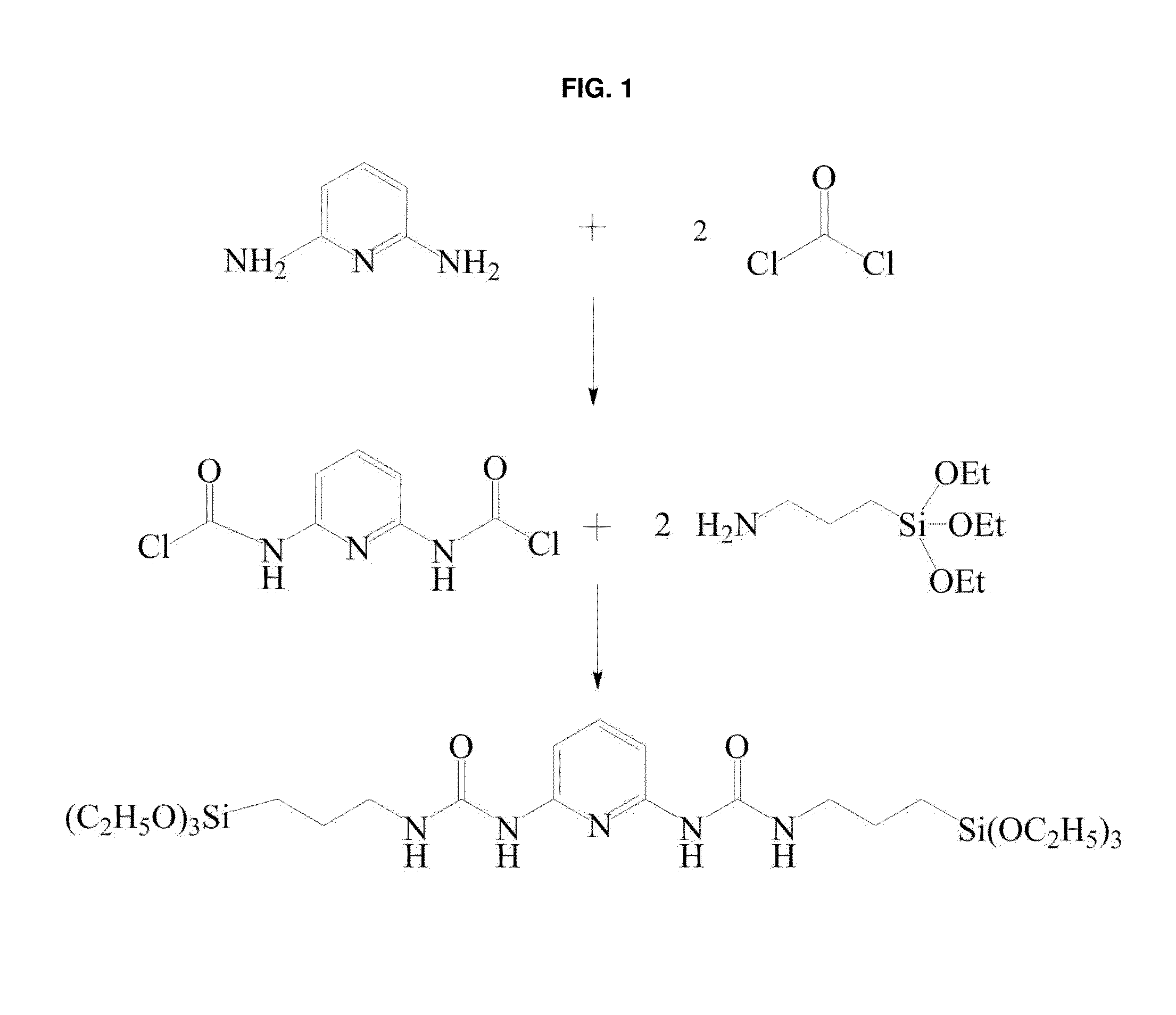Organic-Inorganic Hybrid Mesoporous Silica Material Modified by Sulfonic Acid Group for Selective Adsorption of Metal Ions and Method of Manufacturing the Same
a technology sulfonic acid group, which is applied in the field of organic-inorganic hybrid mesoporous silica material modified by sulfonic acid group and a method of manufacturing the same, can solve the problems of increasing environmental pollution, affecting the quality of organic materials, and not being good for humans, etc., and achieves high regularity and high surface area
- Summary
- Abstract
- Description
- Claims
- Application Information
AI Technical Summary
Benefits of technology
Problems solved by technology
Method used
Image
Examples
example 1
Preparation of Organic-Inorganic Hybrid Silica Source Including Cross-Linked 2,6-Diamino Pyridine Group
[0073]FIG. 6 is a flow chart for explaining a synthetic process of an organic-inorganic hybrid silica precursor including a cross-linked 2,6-diamino pyridine group in accordance with exemplary embodiments.
[0074]The synthetic process will be explained referring to FIG. 6. First, 1.1 g of 2,6-diamino pyridine and 1.98 g of phosgene are dissolved in 80 ml of acetonitrile (Step S61).
[0075]Then, the reactant is refluxed at a refluxing temperature of acetonitrile for 12 hours (Step S62). After that, 4.43 g of 3-aminopropyltriethoxysilane is added (Step S63).
[0076]The reactant is stirred at room temperature for 48 hours (Step S64), and then the solvent is removed under a reduced pressure (Step S65).
[0077]Precipitated material is washed using hexane (Step S66) and then dried under vacuum for 24 hours (Step S67).
[0078]Through performing the above-described processes, an organic-inorganic hy...
PUM
| Property | Measurement | Unit |
|---|---|---|
| Fraction | aaaaa | aaaaa |
| Ratio | aaaaa | aaaaa |
| Adsorption entropy | aaaaa | aaaaa |
Abstract
Description
Claims
Application Information
 Login to View More
Login to View More - R&D
- Intellectual Property
- Life Sciences
- Materials
- Tech Scout
- Unparalleled Data Quality
- Higher Quality Content
- 60% Fewer Hallucinations
Browse by: Latest US Patents, China's latest patents, Technical Efficacy Thesaurus, Application Domain, Technology Topic, Popular Technical Reports.
© 2025 PatSnap. All rights reserved.Legal|Privacy policy|Modern Slavery Act Transparency Statement|Sitemap|About US| Contact US: help@patsnap.com



